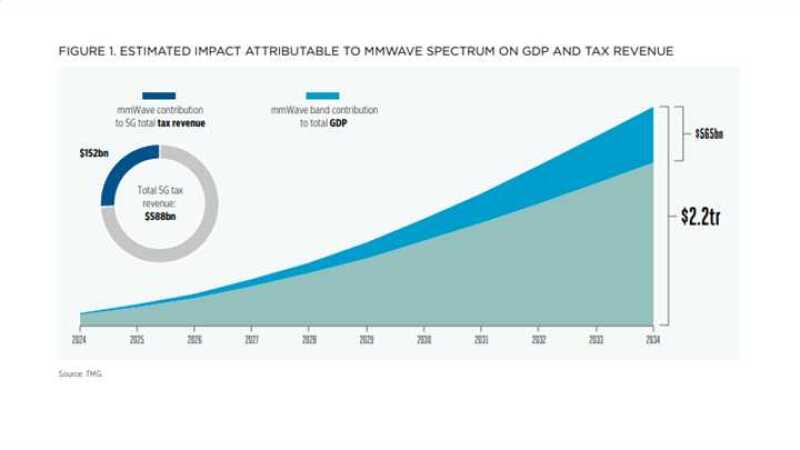Unlocking the right mmWave spectrum to help the mobile industry deliver 5G services could also add an additional $152 billion in tax revenues, according to a new GSMA report.
5G services could benefit healthcare, education, and mobility whilst also helping to reduce pollution and increase safety, the “Socio-Economic Benefits of 5G Services Provided in mmWave Bands” report claims.
These outcomes, according to the mobile industry body, relies on governments supporting the identification and release of enough mmWave spectrum across 2019. mmWave bands sit between 24 GHz and 86 GHz.
mmWave is set to carry the highest capacity 5G services and has long been identified as having the ideal characteristics to deliver 5G, such as low latency, high reliability, and high data transfer rates.

“The global mobile ecosystem knows how to make spectrum work to deliver a better future,” said Brett Tarnutzer, Head of Spectrum, GSMA. “Mobile operators have a history of maximising the impact of our spectrum resources and no one else has done more to transform spectrum allocations into services that are changing people’s lives. Planning spectrum is essential to enable the highest 5G performance and government backing for mmWave mobile spectrum at WRC-19 will unlock the greatest value from 5G deployments for their citizens.”
According to the report, based on a study conducted by TMG, the Asia Pacific region and the Americas are expected to take an early lead in 5G, and this will benefit these regions greatly by giving them the greatest share of GDP attributed to mmWave 5G. Asia Pacific will see a GDP boost of $212 billion with the Americas seeing GDP of $190 billion.
However Europe is forecasted to see the greatest GDP growth attributable to mmWave, seeing a rise of 2.9%, the study found. The Americas was second, with 2.3%.
In 2024, the report predicts there will be measurable impact on growth from 5G. The impact of mmWave is predicted to grow from $13.1 billion in 2024 to $565 billion in 2034.
From 2024-2034, the average annual growth in contribution of mmWave 5G to GDP is over 80% in Sub-Saharan Africa versus 53% in Europe.
“More than 5 billion people already rely on the mobile ecosystem to deliver services that are integral to their daily lives and fundamental to the economic sustainability of the communities they live in. 5G can offer more benefits and a whole new range of services to even more people, but this will not be possible without access to this vital spectrum.”
The key findings of this study show that, by 2034, 5G can be expected to generate $2.2 trillion in GDP, and $588 billion in tax revenue. The GSMA challenged governments to review and support industry proposals for 5G spectrum waves; support a process for the global harmonisation on the use of different spectrum bands; review regulatory frameworks to enable 5G bands to be deployed; and aim to make available 80-100 MHz of contiguous spectrum per operator in prime 5G mid-bands (e.g. 3.5 GHz) and around 1 GHz per operator in millimetre wave bands (i.e. above 24 GHz).





